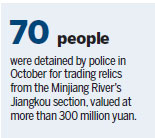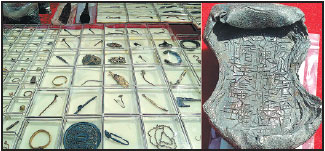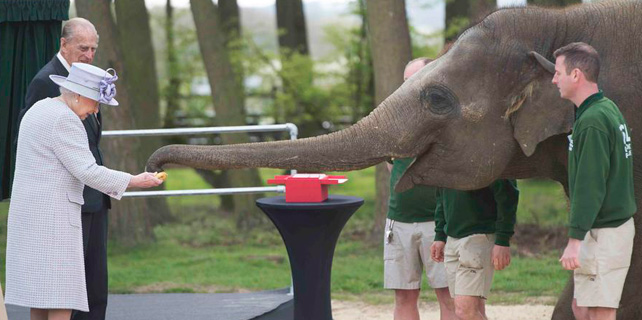Dig for rebel emperor's sunken treasure suspended as flood season approaches
An archaeological dig for an ancient king's sunken treasure in Sichuan province battened its hatches on Wednesday, as the annual flood season approaches.
More than 30,000 relics have been recovered so far.
Archaeologists have unearthed gold, silver, bronze and ironware dating back about 400 years since draining a section of the Minjiang River running through Meishan's Pengshan district in early January.
"More than 1,000 items are directly related to the Daxi Kingdom founded by Zhang Xianzhong after the collapse of the Ming Dynasty (1368-1644) and offer evidence the river was where Zhang's fleet of about 1,000 vessels was attacked and destroyed in 1646," said Gao Dalun, president of the Sichuan Provincial Cultural Relics and Archaeology Research Institute.

Leading historians have called the discoveries the most important related to the Ming era since the excavation of the Dingling Mausoleum, the burial site of Emperor Wan Li (1563-1620) and his two empresses, in Beijing in 1958.
Sources from the institute said work will likely restart next year thanks to funding from the National Administration of Cultural Heritage. The amount was not disclosed.
Zhang, a native of the area that now forms Shaanxi province, led a farmers' revolt and captured Chengdu, the Sichuan capital, declaring himself emperor of Daxi in 1644.
Chronicles show Zhang was forced to flee the city two years later and was eventually defeated and killed by troops from the Qing Dynasty (1644-1911) after he and his men were ambushed in a section of the Minjiang River known as Jiangkou by Yang Zhan, a Ming general, who torched the rebels' boats.
Since the 1950s, bulk silver, gold and coins have been found in Jiangkou from time to time. The Meishan police said in October that after more than a year of investigation, they had detained 10 gangs illegally digging for relics and nine illegal trading networks involving 70 people who traded more than 300 million yuan ($44 million) worth of relics from the Jiangkou section.
The move prompted archaeologists to start the first underwater archaeological dig in Sichuan. Temporary dams were built in Jiangkou, and water was drained before Gao's institute started the dig in January.
"After 98 days of digging in an area of more than 20,000 square meters, we have found gold plates that Zhang gave to his concubines, gold coins he used as rewards and silver ingots with the name of his kingdom and year of their manufacture," Gao said.
"We also found gold rings, earrings and hairpins, iron knives, swords, spears, arrowheads, porcelain plates and bowls, bronze locks, keys, sliding weights from a steelyard and thimbles."
According to Zhou Chunshui, an expert in the protection of underwater cultural heritage from the National Administration of Cultural Heritage, the jewelry found in Jiangkou came from common people.
Chronicles in Sichuan suggest that Zhang was cruel, looting wealth from both governments and common people.
huangzhiling@chinadaily.com.cn
|
Left: Jewels retrieved from the sunken fleet of Zhang Xianzhong, a revolt leader in late Ming Dynasty (1368-1644). Right: A silver ingot found in the Jiangkou section of the Minjiang River.Huang Zhiling / China Daily |
(China Daily 04/14/2017 page4)























